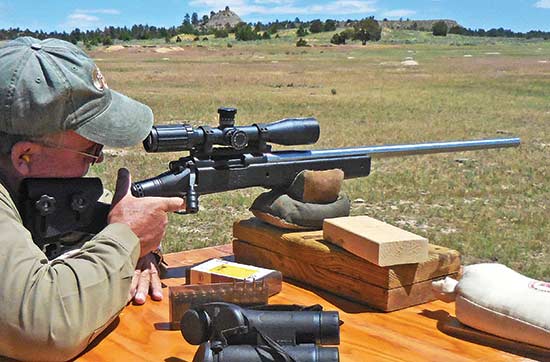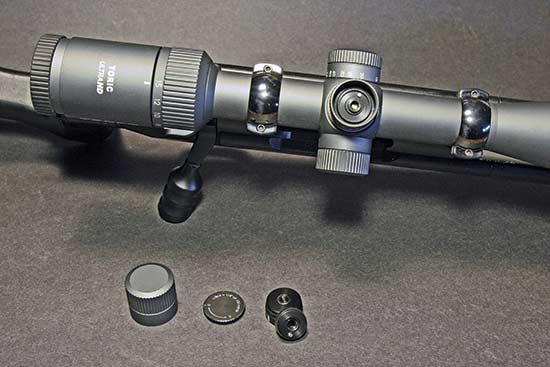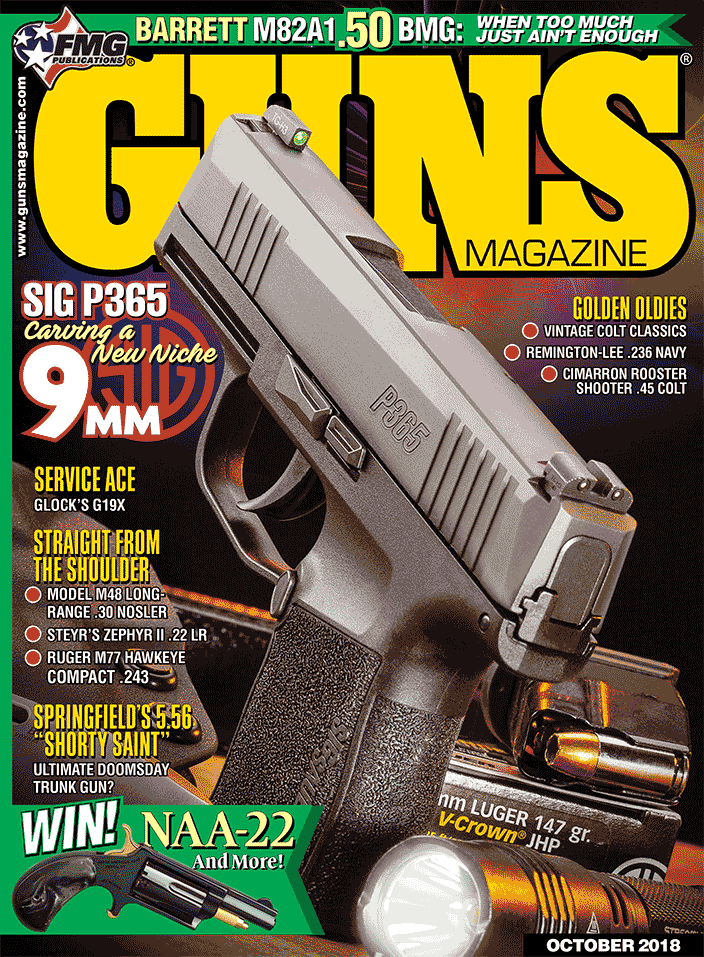Coming To Terms
Let’s Clear The Air On Scope Tech-Talk
Since “affordable” laser rangefinders appeared in the 1990s, some riflescopes have evolved into contraptions very different than your grandfather’s Lyman Targetspot, and so has the related terminology. For shooters who recently discovered it’s impossible to aim correctly with a plex reticle anymore, here’s a translation of some new terms:
“Windshield” means the view through the scope, these days often filled with reticles offering far more aiming points than a boring old plex. The name’s somewhat deceptive, since an actual vehicle windshield filled with hashmarked black lines would probably be illegal — especially in California.
The details of a scope’s windshield can also be called various interesting names, some related to other parts of the scope. It can be a “BDC,” meaning Bullet Drop Compensating, though I’ve also heard some people claim it means Bullet Drift Compensating. Actually, with hashmarks on both the vertical and horizontal crosshairs, it can mean both.
BDC or “mil-dot” are often applied to any multi-point reticle, but mil-dot originated as a more specific term for dots or hashmarks denoting “milliradians,” a measure of angle meaning 1/1000 of a radian. If you really want to know the mathematical definition of “radian,” you can look it up. But for our purposes it’s enough to know it’s another measurement of angle, like degrees, or the minutes of angle, 1/60th of a degree — more familiar to older American shooters — called MOA.
Metric Math
Long-range shooters like milliradians because they’re part of the metric system: One milliradian equals one meter (39.37″) at 1,000 meters. This is far handier to use than minutes and yards, since everything can be multiplied or divided by 10. But it still manages to confuse many shooters who grew up with quarter-MOA clicks.
Mil-scope clicks are actually 0.1 milliradian (0.3937″ at 100 meters), and if a scope’s “mil-dots” are actually in mils (not some arbitrary number as they are in many BDC reticles) it’s easy to twist the turrets to compensate for a miss. If, for instance, the bullet lands one mil low at any range, then the elevation turret can be cranked up 10 clicks to compensate.
Doing the same thing is possible with MOA adjustments, but involves more complex math than most humans find convenient, or even comprehensible. Still, some shooters (especially those who might be “middle-aged”) are so used to using MOA they prefer translating quarter-MOA clicks into milliradian reticles. True long-range addicts consider this stupid, the reason they also tend to switch their laser rangefinders to meter-mode rather than yards. All aspects of long-range shooting are then based on multiples of 10 — the scope’s clicks, the windshield and the distance.
Despite all this, many optics companies still offer scopes with MOA adjustments and MOA-based reticles, called “MOA/MOA.” There are also plenty of “mil/mil” scopes, more sensible for those Americans who can wrap their heads around the metric system. For culturally conflicted (or simply stubborn) shooters, there are even MOA/mil scopes, with quarter-MOA clicks and milliradian reticles.
Back To Zero
Another term capable of confusing some shooters is “zero stop.” When scopes with turrets designed to be quickly adjustable in the field started appearing, some shooters discovered twisting the elevation turret for different ranges often resulted in forgetting exactly how to return the knob back to the initial zero. I acquired my first such scope in the late 1990s, initially using it for varmint shooting at longer ranges, and experienced this confusion firsthand. On one prairie dog shoot I had to set up a target in the sagebrush to find out where in hell the rifle was shooting. A zero stop allows us to return the scope to its initial zero by physically “stopping” the elevation turret near the zero setting.
On most scopes the exterior elevation turret can be removed, and simple spacers then placed under the turret (garden-hose washers work on quite a few scopes). In other scopes, the turret includes a mechanically adjustable zero-stop. This usually increases the price a little, but for those who don’t really want to make garden-hose washers part of their high-tech scope, the extra bucks are often well spent.
John Barsness’s book Modern Hunting Optics can be ordered througha href=”http://www.riflesandrecipes.com” rel=”noopener” target=”_blank”>www.riflesandrecipes.com, P.O. Box 579, Townsend, MT 59644-0579, 406-521-0273.






